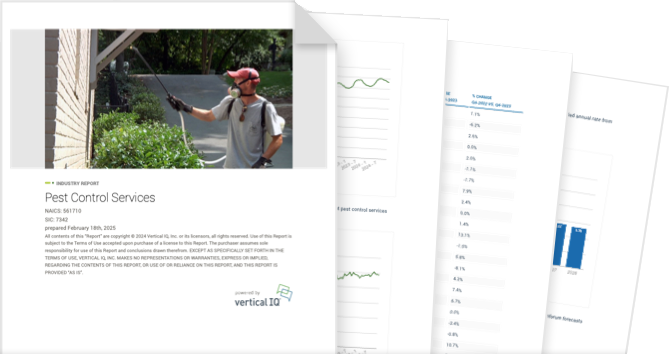Auto Parts Distributors NAICS 423120

Unlock access to the full platform with more than 900 industry reports and local economic insights.
Get access to this Industry Profile including 18+ chapters and more than 50 pages of industry research.
Industry Summary
The 7,440 auto parts distributors in the US generate revenue by selling automotive parts, supplies, equipment, tools, and accessories to retailers and auto service providers. In general, auto parts distribution involves warehouse distributors (WD), jobbers, and retailers. Large WDs purchase and stock large quantities of parts and supplies from manufacturers and distribute them to jobbers. Jobbers purchase smaller quantities from WDs and sell them to retailers/dealers, repair shops, body shops, and dealership parts departments.
Complex, Long-Lasting Parts
Advances in technology have increased the quality, complexity, and average useful life of automotive parts.
Significant Investment in Inventory
As a result of new product proliferation in the auto industry, warehouse distributors (WD) stock hundreds of thousands of parts, components, and accessories to service the ever growing number of different brands and models.
Recent Developments
Dec 8, 2025 - Auto Parts Wholesalers Grappling With Excess Inventory
- Both sales and the inventory to sales ratio for auto parts wholesalers showed signs of weakening in 2025, per the US Census Bureau, as Trump’s automotive tariffs are cutting into results. Industry revenue fell 1% year over year in July 2025, while the sales to inventory ratio fell 8% from the previous month, indicating wholesalers have too much inventory after stockpiling parts to get ahead of tariffs. The industry faces significant headwinds now that 25% tariffs on Mexican and Canadian auto parts imports are in full effect. There is no such thing as an automobile fully made in the US. Virtually all cars contain parts from Mexico and Canada, and billions of dollars worth of auto merchandise crosses North American borders every year. Industry analysts say that tariffs increase a car’s price by an average of $3,000.
- First Brands Group, a major US auto parts supplier known for Fram and Raybestos brands, has filed for Chapter 11 bankruptcy, citing $10 to $50 billion in liabilities mainly from years of aggressive expansion. While primarily serving the aftermarket sector, its collapse could ripple through the industry, potentially causing supply disruptions, higher retail prices, and increased pressure on other suppliers with similar debt levels. US tariff policies have added to the complexity, which was already causing significant financial strain throughout the automotive industry. Other ramifications include retailers facing possible inventory gaps, and consumers could see higher prices as companies steer through the ups and downs of a constantly moving trade policy. The First Brands bankruptcy underscores the vulnerability of the US auto parts sector to both financial missteps and an ongoing American trade war.
- A US trade war with China is affecting car manufacturers in numerous ways, with one of the most challenging being China’s near total control over rare-earth magnets necessary for electric vehicle (EV) manufacturing and certain traditional car systems (and virtually all other electronics). China controls 90% of rare earth metals such as dysprosium and terbium, elements used in magnets so they operate at high temperatures. Exports of rare-earth magnets from China have all but halted since April amidst the tariff squabble with the Trump administration. Auto manufacturers worry they can’t keep production lines moving without the magnets and might have to shut down production. Some are considering outside-the-box solutions including shifting all engine production to China, or shipping American-made EV engines to China so the magnets can be installed. Any of those options will run afoul of Trump’s trade goals and would significantly increase costs already high due to tariffs.
- Struggling retailer Advanced Auto Parts is aggressively moving on a corporate restructuring in early 2025 to turn around years of floundering sales and ranking fourth among its competitors. Its closing of 700 corporate-owned and independent stores represents 10% of corporate locations and 20% of indies. It is also closing four distribution centers and simplifying its supply chain from big distribution hubs to smaller regional hubs in order to get the vast amount of parts the company must carry to customers as quickly as possible. With recession worries looming, auto parts retailers typically benefit from consumers putting off new car purchases in favor of repairing a current vehicle. But the trade war between the US and its North American neighbors is a wild card that could increase costs and blunt any gain to be had in the auto parts industry.
Industry Revenue
Auto Parts Distributors

Industry Structure
Industry size & Structure
The average auto parts distributor operates out of a single location, employs 29 workers, and generates about $30.3 million annually.
- The auto parts distribution industry consists of about 7,440 companies that employ about 222,885 workers and generates about $225.9 billion annually.
- The industry is concentrated at the top and fragmented at the bottom; the top 50 companies account for 61% of sales. Many companies are small independent operators.
- Large companies include Hahn Automotive Warehouse and Keystone Automotive.
- Some large auto parts distributors have extensive retail operations.
Industry Forecast
Industry Forecast
Auto Parts Distributors Industry Growth

Vertical IQ Industry Report
For anyone actively digging deeper into a specific industry.
50+ pages of timely industry insights
18+ chapters
PDF delivered to your inbox
